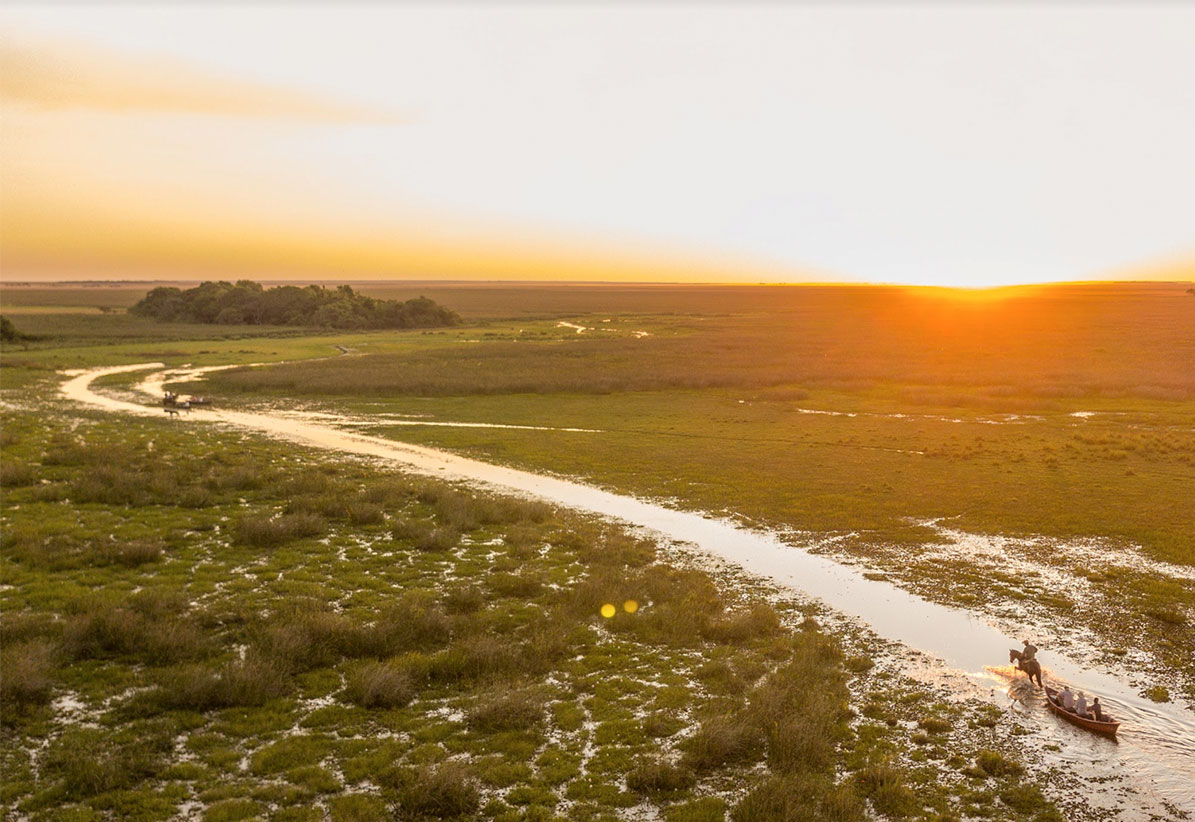
Interview with Marisi López
Don’t miss the interview with Marisi López, in which she told us about her experience in saving and caring for nature
Born in the province of Corrientes in the northeast of the Republic of Argentina, she studied Public Relations at the Universidad Argentina de la Empresa (UADE) in Buenos Aires, where she completed the postgraduate course in Corporate Image and a course in Leadership and Negotiation. Other courses she took were: Environmental Law (Argentina) and Women Leaders in Conservation (University of Colorado, United States).
Since 2005 she has been part of the Rewilding Argentina Foundation. Passionate about nature and the care of all its members, with the purpose of spreading her appreciation for natural beauty, leaving a mark, and a better world.
WHAT EXPERIENCE OR WHO CONTRIBUTED TO YOUR LOVE AND COMMITMENT TO SAVE AND CARE FOR NATURE?
I identify two moments in my life, the first is with my family, which consists of 5 siblings and my parents. Since we were very young they took us to tour Argentina and we camped in tents or mobile homes, we got to know all the National Parks of Argentina, before we got to know the rest of the world, my parents made sure that we got to know our country. That was the beginning of the connection and the enjoyment of nature.
Those family trips have been inside me since I was a girl and somehow emerged in my adult life, they are one of the happiest memories of my childhood and adolescence. The second moment is when I was summoned to work at the Rewilding Argentina Foundation, I was at a point in my life quite disconnected from nature, but that moment was a rediscovering and a reawakening of my love for nature, it gave me an opportunity to see that this is what I want to do: I want to dedicate my life to protecting these places.
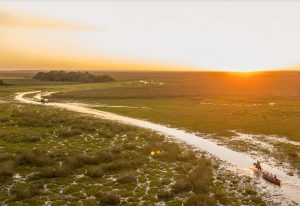
Touring the landscape
Photography: Matías Rebak
WHAT IS THE REWILDING ARGENTINA FOUNDATION AND WHAT IS ITS MISSION?
It is founded and made up of Argentine activists and environmentalists. We are a foundation that was born from Tompkins Conservation, whose mission and vision is to generate restorative economies based on nature tourism, such as wildlife observation tourism.
To change the chip and go towards an economy that is hand in hand with conservation and not an extractivist or destructive economy as has been the case in recent years. A new model is necessary, a paradigm shift and for that we work on a model called nature production, which seeks to generate restorative local economies that go hand in hand with conservation and not extraction and destruction; for it to work it has to have 4 axes: The first axis is Natural Protected Areas that guarantee the longterm conservation of these environments. The second axis are Complete and Functional Ecosystems, made to recover everything that has become extinct.
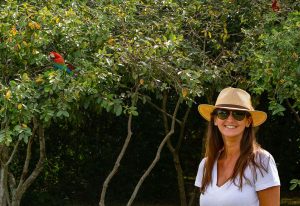
Photography: Matías Rebak
As a foundation we carry out active conservation, this means going a step back and returning the extinct species so that the ecosystem is as complete as possible and from that point on, start conserving. Through the Rewilding tool, we recover extinct species, such as the giant otter, the anteater, the jaguar, the scarlet macaw, among many other species. Once the ecosystem is as complete as possible, it becomes a functional ecosystem, that is, it puts all its ecosystem services into operation.
The third axis are Regenerative Economies, which seek an economy based on wildlife tourism; for that the parks that were created in the first axis must have public access, campsites, roads, signage, services, and everything necessary to receive tourists; we seek to make it a known brand at a regional, national and international level; that is why we are working so that Iberá Park, Impenetrable Park and Patagonia Park are recognized at all these levels as nature tourism destinations and attract more tourists.
The fourth axis is the Work with the Communities, it is basically local development based on nature tourism. It focuses on getting more communities surrounding the park to begin to live from that park and generate genuine income from the tourists who want to see that park. For example, they stay in these communities, buy handicrafts, hire guides, among many other services that comply with the network of services related to nature tourism and generate income for the community. In this way, these communities become guardians of the park, because they are the ones who receive the income from this nature tourism and we all win, they win by having a better quality of life, better income, better well-being and we win as conservationists by having more allies to conserve the park.
“The Rewilding tool helps us recover endangered species.”
WHAT SUSTAINABLE TOURISM PRACTICES SHOULD TOURISM COMPANIES IMPLEMENT?
We need practices that are conscientious and friendly to the environment, such as garbage treatment: we have to plan what we are going to do with the garbage before generating it, lower the level of consumption of plastics, especially single-use ones; then we have to sort garbage, reuse, and compost; we have to try to keep waste to a minimum. Another practice is the conscious consumption of water, how much water is used and for what.
Minimize the use of electrical energy, in most cases we use solar panels, we try to make everything as friendly as possible to the environment. When building, we use native materials, try to measure the footprint we make in each of the constructions and that everything we are going to use comes from the closest place possible. At the aesthetic level, we try to generate a style that integrates with nature so that the constructions do not break into the landscape and blend with it. The idea is that the necessary infrastructure in these places such as campsites, signage and posters, get lost in the natural landscape and go with it.
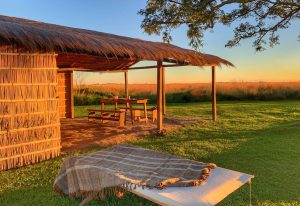
Sunset at Iberá National Park
Photography: Marisi López
WHAT SUSTAINABLE TOURISM PRACTICES SHOULD TOURISM COMPANIES IMPLEMENT?
We need practices that are conscientious and friendly to the environment, such as garbage treatment: we have to plan what we are going to do with the garbage before generating it, lower the level of consumption of plastics, especially single-use ones; then we have to sort garbage, reuse, and compost; we have to try to keep waste to a minimum. Another practice is the conscious consumption of water, how much water is used and for what.
Minimize the use of electrical energy, in most cases we use solar panels, we try to make everything as friendly as possible to the environment. When building, we use native materials, try to measure the footprint we make in each of the constructions and that everything we are going to use comes from the closest place possible. At the aesthetic level, we try to generate a style that integrates with nature so that the constructions do not break into the landscape and blend with it. The idea is that the necessary infrastructure in these places such as campsites, signage and posters, get lost in the natural landscape and go with it.
WHAT IS THE RESPONSIBILITY OF A TOURIST WHEN VISITING A NATIONAL PARK?
We try to ensure that the responsibility of the tourist is a shared responsibility with the foundation; we have the responsibility to inform the tourist well where they are arriving and what they can do for the Natural Park, from very basic things such as not littering, not pollute not only with garbage but also with noise and light; what we want is for them to disconnect from everything artificial and connect with nature, to listen, feel and perceive nature through all their senses.
We also have the responsibility that they feel and take responsibility for the care of this place, to understand what this healthy and wild biodiversity barely touched by man means. That it does not disturb the fauna, that it does not leave the permitted places so that the protagonist of these natural landscapes is the wild fauna, and the tourists are spectators. We want them to understand that this space belongs to the fauna. The responsibility to understand that taking care of biodiversity and the natural environment is everyone’s responsibility, it depends on everyone to have healthy natural spaces that will bring that health to the rest of the spaces and to humanity; to understand that the responsibility of a healthy planet it belongs to everyone The National Parks give us the opportunity to feel that responsibility in a more direct way.
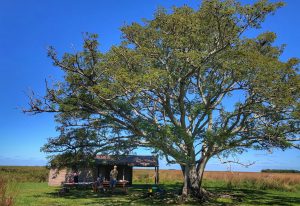
Sunset at Iberá National Park
Photography: Marisi López











